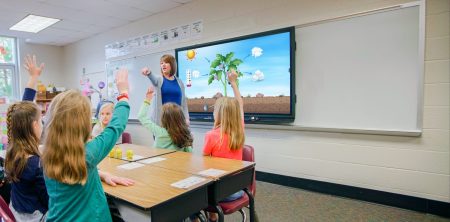In today’s educational landscape, innovative teachers are constantly seeking engaging methods to connect with students and enhance learning experiences. One resource that has proven particularly effective is the strategic use of kids animated shows as supplementary teaching tools. These colorful, character-driven narratives offer much more than mere entertainment; they provide unique opportunities to illustrate complex concepts in accessible ways, particularly for visual and auditory learners who might struggle with traditional textbook approaches.
The relationship between education and animation has evolved significantly over the past decade. Forward-thinking teachers recognize that high-quality animated content can reinforce curriculum objectives while maintaining student engagement. Rather than viewing screen time as a distraction from learning, educators are carefully curating animated shows that align with specific learning outcomes, from language acquisition and scientific concepts to social-emotional development and cultural awareness.
Educational psychologists have long understood the power of storytelling in cognitive development. When information is presented within the context of a narrative, retention rates improve dramatically compared to rote memorization techniques. Animated shows excel at this storytelling approach, creating memorable characters and scenarios that children naturally connect with emotionally. This emotional connection serves as a powerful anchor for academic concepts that might otherwise feel abstract or disconnected from students’ lived experiences.
The multi-sensory nature of animation also addresses diverse learning styles within a classroom. Visual learners benefit from the colorful imagery and character design, auditory learners engage with dialogue and music, and kinesthetic learners can participate in related activities inspired by the shows. This multi-modal approach helps ensure that no student is left behind, regardless of their preferred learning style or cognitive strengths.
Recent research from education technology specialists indicates that strategic use of animated content can increase attention spans rather than diminish them, contrary to popular belief. When teachers facilitate guided viewing experiences with clear learning objectives, students develop critical viewing skills that transfer to other academic contexts. They learn to identify key information, recognize patterns, and make connections between concepts – all valuable skills in today’s information-rich world.
Cultural representation in modern animated shows has also improved dramatically, offering teachers valuable resources for building inclusive classrooms. Shows featuring diverse characters, family structures, and cultural practices help normalize differences and build empathy. Teachers can leverage these representations to initiate age-appropriate conversations about diversity, equity, and inclusion – foundational social skills that extend well beyond academic achievement.
Subject-specific animated content has also flourished in recent years. Math-focused shows demystify numerical concepts through visual representation. Science-themed animation brings microscopic processes and vast cosmic phenomena to life in ways textbooks simply cannot. Language arts programs embed vocabulary development and narrative structure within entertaining storylines. Even social studies content benefits from animation’s ability to recreate historical events or explain governmental processes in accessible ways.
The pedagogical approach to using animated content has become increasingly sophisticated. Rather than passive viewing, effective teachers implement pre-viewing activities that establish learning goals, guided viewing with strategic pauses for discussion, and post-viewing activities that reinforce key concepts. This structured approach transforms what might be dismissed as “cartoon time” into legitimate educational experiences with measurable outcomes.
Digital literacy skills also develop naturally when teachers facilitate critical discussions about animated content. Students learn to distinguish between fantasy and reality, identify persuasive techniques used by creators, and evaluate the quality and credibility of information presented. These media literacy skills have become essential in navigating today’s complex information environment.
Technology integration has simplified the process of incorporating animation into lesson plans. Interactive whiteboards allow teachers to pause and annotate directly on scenes, highlighting key elements or posing questions. Digital learning platforms enable students to engage with animated content at their own pace, supporting differentiated instruction. Some educational animation even incorporates interactive elements, allowing students to make choices that affect narrative outcomes.
Professional development opportunities for educators have expanded to include media literacy and effective use of visual resources. Progressive school districts recognize that selecting and implementing animated content requires specific pedagogical knowledge that many teacher preparation programs have not traditionally addressed. Workshops and continuing education courses now help teachers develop these specialized skills.
Assessment strategies have also evolved to measure the effectiveness of animation-enhanced lessons. Rather than relying solely on traditional quizzes, teachers might ask students to create their own animations demonstrating understanding of concepts, compare and contrast different animated treatments of similar topics, or apply problem-solving approaches modeled in animated scenarios to real-world situations.
Parent partnerships strengthen when teachers communicate the educational rationale behind animated content used in classrooms. By sharing specific learning objectives and suggesting related shows families might watch together at home, educators extend the learning beyond school hours and empower parents to engage meaningfully with their children’s media consumption.
The future of education will likely see increasing integration between traditional teaching methods and carefully selected animated content. As artificial intelligence and virtual reality technologies advance, the line between animation and interactive learning experiences will continue to blur, offering even more immersive educational opportunities. Forward-thinking teachers are positioning themselves at this exciting intersection of technology and pedagogy.
Ultimately, the strategic use of animated shows in educational contexts represents not a surrender to screen-based entertainment but rather the thoughtful appropriation of powerful communicative tools for academic purposes. When implemented with clear learning objectives and appropriate facilitation, these vibrant, narrative-driven resources can transform abstract concepts into memorable, applicable knowledge that resonates with young learners.

